(788 products available)































































































































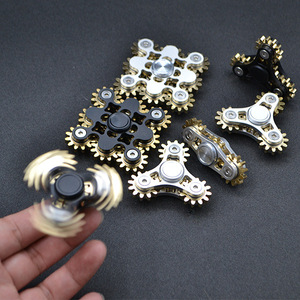
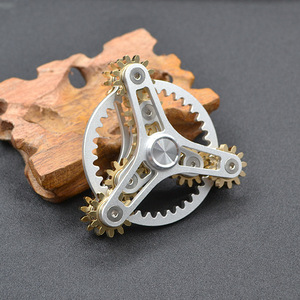
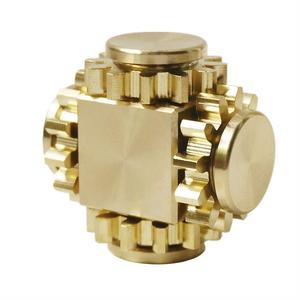
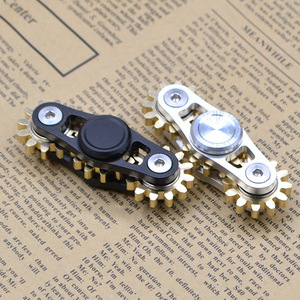
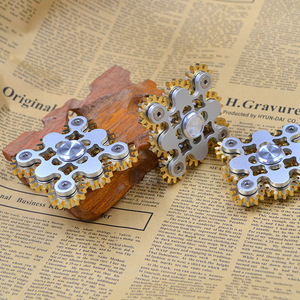










































There are many types of gyroscopes available, and each type serves a distinct purpose. Here are some common types:
Mechanical gyroscopes
Mechanical gyroscopes are the traditional kind that uses a spinning wheel or rotor. The mechanical gyroscope spins at high velocity within gimbal rings that allow it to pivot in multiple directions. Their design is relatively simple. The mechanical gyroscope is used to demonstrate basic principles of angular momentum and stability. Schools frequently use them for educational purposes. They are also found in some toys.
Optical gyroscopes
Optical gyroscopes make use of light to detect rotational movements. Fiber optic gyroscopes (FOGs) and ring laser gyroscopes (RLGs) are examples of optical gyroscopes. They are highly precise and are therefore used in navigation systems for airplanes, ships, and spacecraft. FOGs utilize coiled optical fibers, while RLGs use laser beams in ring-shaped cavities.
MEMS gyroscopes
Microelectromechanical systems (MEMS) gyroscopes are tiny devices that are fabricated using semiconductor manufacturing techniques. They are cheap and can fit on a chip. As a result, they are widely used in consumer electronics such as smartphones, drones, and wearable devices. 3-axis MEMS gyroscopes are among the most common types. They can detect rotation along three axes.
Digital gyroscopes
Digital gyroscopes use electronic sensors to replace mechanical spinning wheels. An example of a digital gyroscope is the solid-state gyroscope. Digital gyroscopes have features such as low power consumption and small sizes. They are used in mobile phones, tablets, and gaming controllers to enhance the accuracy of motion sensing and stabilization functions.
Precision gyroscopes
Precision gyroscopes are tagged along with high-quality gyroscopes like ring laser gyroscopes and fiber optic gyroscopes. These gyroscopes are known for their accuracy and reliability. They are used in applications that need precise navigation and orientation, such as in aerospace, marine, and military systems.
When choosing a gyroscope for sale, consider its application, construction material, and performance features.
Gyroscopes serve different purposes. A gyroscope meant for stabilizing motorcycles will be different from one used for measuring angular motion. Therefore, buyers should start by determining the intended use of the gadget. For instance, if a buyer wants a gyroscope to measure orientation, they should get a MEMS gyroscope since it is accurate for such applications. On the other hand, mechanical gyroscopes work well for navigation and stabilization purposes.
Apart from the material, buyers should also consider the construction of the gyroscope. For example, it should have a sturdy construction and a well-built design that enhances durability and longevity. It can also have a compact design that makes it portable while having a large design that makes it difficult to move around. The material used in making most gyroscopes is aluminum, stainless steel, and titanium.
The performance features of a gyroscope are also important when making a choice. This includes the spin rate, which determines how stable the gyroscope is. A high spin rate means high stability and more precession effect. The precession effect happens when the gyroscope moves in a direction perpendicular to the applied torque. It is also important to check the torque rating since it affects the response time and acceleration of the gyroscope. Buyers should get a gyroscope with high torque for better performance.
The design of gyroscope toys revolves around the principle of angular momentum. Typically, they consist of a spinning wheel or rotor mounted on a set of pivoting arms or axles. The wheel is allowed to spin freely, and its axis of rotation is maintained by the device's arms or axles. This design enables the wheel to keep on rotating even when the toy is moved or tilted. In addition, the design can also be enhanced with features depending on the type of gyroscope toy. For instance, fidget spinners have multiple arms, while tops have a pointed tip for spinning.
Gyroscope toys are created for amusement and education. They serve to demonstrate the principles of physics, such as precession, angular momentum, and equilibrium. They also help in developing coordination and fine motor skills. Gyroscope toys also provide sensory feedback and a calming effect. This is ideal for people with attention deficit hyperactivity disorder and autism.
Gyroscope toys have several functions, features, and designs that cater to various interests and age groups. They can be made from different materials such as plastic, metal, or wood. The material chosen affects the toy's durability, aesthetics, and cost. For instance, metallic fidget spinners are more durable than plastic ones, although they are heavier.
Some gyroscope toys can have LED lights and sound effects. This makes them more entertaining and visually appealing. The lights can be programmed to flash or change colors in specific patterns. While the sound effects can range from music to realistic noises. Additionally, some gyroscope toys can have educational components, such as puzzles, magnetic parts, or electronic circuits. These toys can teach scientific concepts, develop problem-solving skills, or introduce programming.
Gyroscope toys are versatile and adaptable. They can be used for different purposes and interests. They can be modified to suit different age groups, preferences, and skill levels. For instance, spinning tops can be painted with attractive designs or given a waxed tip for longer spins. Similarly, drones can be programmed to follow commands or perform tasks.
The safety and quality of gyroscopes, whether in education, aerospace, or consumer electronics, are vital because they ensure precise functioning and reliability, preventing possible failures that could lead to accidents or disasters. High-quality gyroscopes fabricated using advanced materials such as MEMS technology can achieve high levels of accuracy and stability, making them essential for navigation systems in aviation, maritime, and military applications where safety is critical. Moreover, robust gyroscope construction and rigorous quality control during manufacturing processes can enhance longevity and performance in demanding environments like robotics and automation, thus reducing risks associated with technological dependence on reliable devices.
Safety measures for gyroscope toys include age appropriateness, non-toxic materials, and secure battery compartments. To ensure safety, quality standards demand rigorous testing for strength, stability, and the absence of harmful substances. Compliance with these regulations demonstrates a commitment to producing safe gyroscope toys. Additionally, clear labeling with age recommendations and safety instructions can guide consumers in making informed choices. Such measures can help prevent accidents and injuries, making gyroscope toys safer for children.
Q1: What are the advantages of gyroscopic exercise equipment?
A1: Gyroscopic exercise equipment can improve strength, balance, coordination, and stability. It activates different muscle groups and makes them work harder to stabilize the body. This helps prevent injuries and correct them.
Q2: How can gyroscopes assist in education?
A2: Gyroscopes are used in education to teach complex concepts in physics and engineering. They provide practical, hands-on learning experiences that help students understand the principles of angular momentum, stability, and motion.
Q3: What is the role of gyroscopes in modern technology?
A3: Modern technology heavily relies on gyroscopes for navigation, motion sensing, and stabilization. They are essential components in smartphones, drones, and autonomous vehicles, ensuring accurate positioning and control.
Q4: How are gyroscopes used in the aerospace industry?
A4: In the aerospace industry, gyroscopes are crucial for aircraft and spacecraft navigation. They help maintain stability and orientation, especially in challenging conditions where GPS signals may be unreliable.
Q5: What are the safety considerations when using gyroscopic devices?
A5: When using gyroscopic devices, it is important to consider the manufacturer's guidelines, ensure proper usage, and maintain the equipment regularly. Users should be aware of their skill levels and gradually increase the intensity of exercises or activities to prevent injuries.